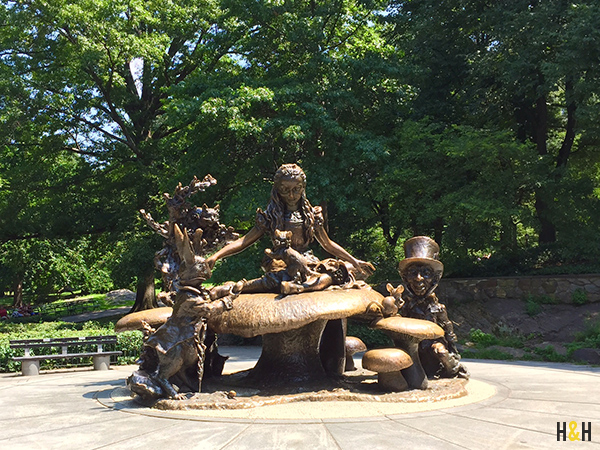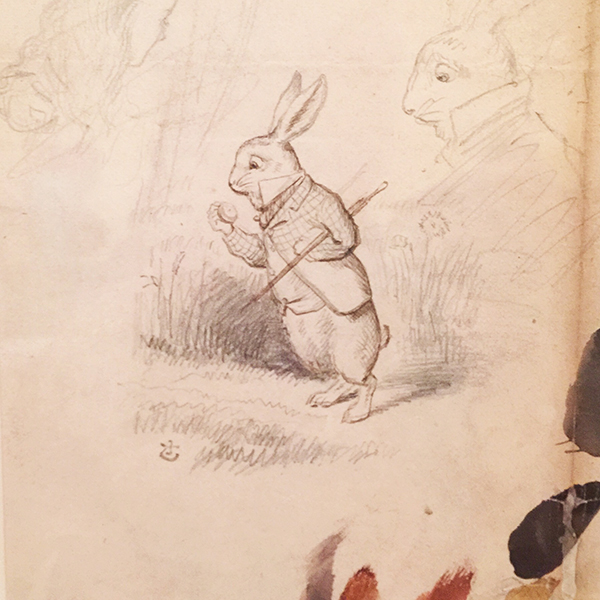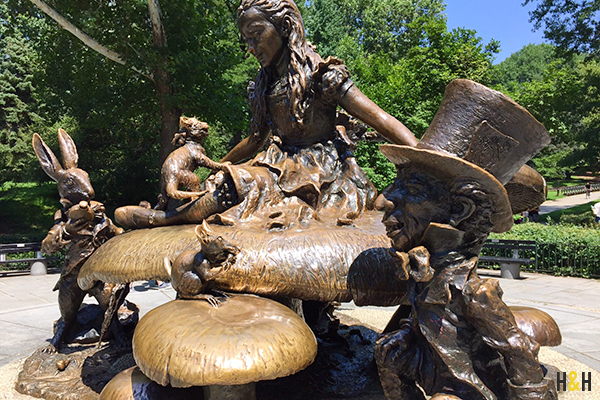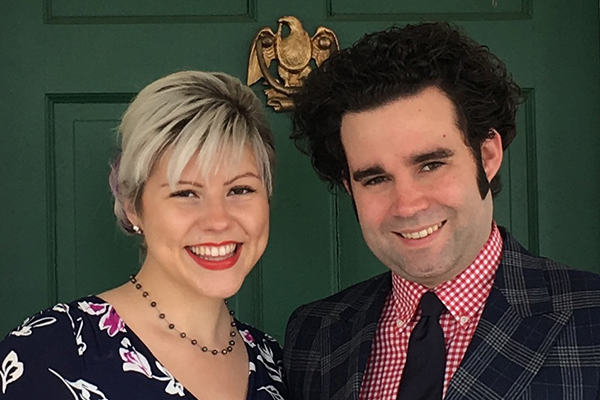Home again, home again, jiggity-jig! One unplanned detour through Atlanta and we are home–after a wonderful, whirlwind of a trip to The Big Apple. On this trip I tried not to take as many pictures and really just soak everything in. But on Sunday, one of my favorites and I went to see the 150 Years of Wonderland exhibit at the Morgan Library. It was there that I read about Lewis Carroll’s humorous essay “Photography Extraordinary” and, if you’ll excuse the pun, went down a bit of a rabbit hole.
In 1855, Carroll published an essay anonymously in The Comic Times called “Photography Extraordinary” that spoofed this new invention of photography. (It’s worth noting that Carroll later became an accomplished portrait photographer himself.) You can read the full text here, as part of the Morgan Library’s online exhibition, which is really fantastic in its own right. The premise was that this new machine could capture the idea of a dunce and, through further development, make it sound brilliant. He then suggests that the same mechanism be applied to the speeches of Parliament. Ha!
As I started thinking about this idea of repetition leading to full development, I started seeing it in John Tenniel’s illustrations for Wonderland as well as the work of many other artists. For instance, The White Rabbit, shown above, appeared repeatedly on sketches throughout the collection. Little details like the lines around his eyes or the length of his ears would change but his essence was always there. (For the record, of all the rabbits, the sketch above was decidedly my favorite.)
Much like an artist, the chef works out the flaws of a knife technique as they become more comfortable with the practice. A musician works out the nuance of a piece as they become more in tune with the placement of actions and the rhythm. The truth and meaning come out as the writer employs different ways of stating their opinion. And perhaps your mother was right: Practice does make perfect.




